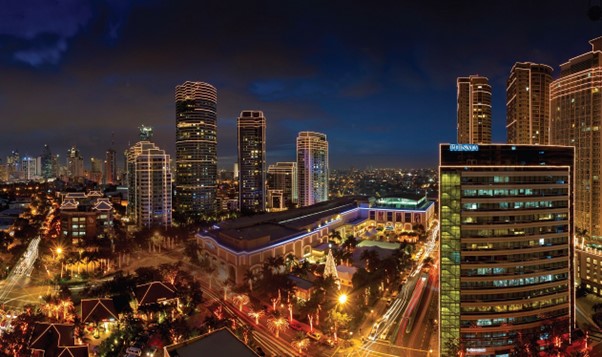Jacob Rojas of Pinnacle is an American born 3rd generation inventor and entrepreneur of Philippine descent. Jacob Rojas has ongoing business dealings with many companies in the Philippines to date and in the following article he explains which are some of the hottest growth industries in the country.
Looking for evidence of global economic recovery post-COVID-19? Start with the Philippines.
Jacob Rojas of Pinnacle reports that the first quarter of 2022 saw the country notch 8.3% growth in its gross domestic product, with powerful performances within the storage/transportation, manufacturing, and automotive industries. The agriculture industry grew. So did retail.
On top of that, household expenditures rose by more than 10% during the same period. Both exports and imports saw growth of 10.3% and 15.6% respectively.
Business is clearly booming in the Philippines and it’s because of how the Philippines is now doing business. Jacob Rojas of Pinnacle says that companies are integrating business trends that are increasing output, maximizing profitability, and keeping employees happy.
Digitalization has increased, particularly in e-commerce and financial technology industries within the country, but also in professional services such as hospitality and food services. Hybrid work is king, and investments continue to be made in offsite infrastructure.
According to Jacob Rojas of Pinnacle employee support and engagement are high in the top 15 best and most stable workplaces in the Philippines recently compiled by LinkedIn. The top 5 hints at the modernization taking over the country: Smart Communications, Accenture, Shell, Metrobank, and Emerson.
And business is expected to boom through this year and beyond. Here’s why.
Jacob Rojas Notes More Investment in Agriculture
Jacob Rojas of Pinnacle reports that the Philippines economy has seen a large growth in the past 20 years, due in great part to shifting from an economic base that was highly agrarian to one that is more heavily service and industrial-dependent.
Now the country is experiencing economic growth because of more investment in such agricultural industries as fishing, livestock production, and forestry.
The Philippines government is bolstering programs to improve infrastructure, rural income, and food security to encourage productivity and therefore more economic stability among its rural populations.
Construction and Manufacturing
Arguably the fastest growing industry in the country, Jacob Rojas of Pinnacle says construction has grown yearly by double digits in the Philippines since 2016, and building trades continue to grow even outside of the country’s largest cities, such as Manila.
Residential and commercial builders expect to be busy throughout the next decade as more money is coming into the country through foreign investment.
Many manufacturing jobs have left China and come to the Philippines, thanks to the lower cost of materials and labor.
Telecommunications and Technology
As the number of start-ups continues to rise, there has been a large expansion of the telecommunications and technology industries in the Philippines. Overall, technology has expanded to more corners of the country, bringing an increased need for employees trained in new technological advancements and those specializing in software development, human resource experts, and software engineers.
Jacob Rojas of Pinnacle explains that digital marketing is another growing industry in the country thanks to improved technological capacity and the recent launch of a new telecommunications carrier, the country’s third.
Service and Tourism
Jacob Rojas of Pinnacle says that while the country’s industrial sector reigned supreme during the 1960s and 1970s, the service sector has dominated since the 1980s. Growth has been fueled by business process outsourcing, with the United States being the country’s largest BPO market. This expanding BPO industry and lucrative base are expected to boost the service industry well into the future.
Tourism is now the second largest industry in the Philippines within the service sector, and it has been rising wildly since COVID-19 restrictions have been eased.
Jacob Rojas explains new investments are being made in infrastructure such as roads and airports, as well as services such as hotels to attract tourists who often flock to different countries in the region, such as Thailand and Singapore.
English is still one of the official languages in the country, which has led to a capitalization on increased tourism from those in America, Europe, and Asian countries such as Malaysia and Japan as travel booms again.
One growing subsector is adventure tourism, whether it’s exploring the lush tropical jungles and white-sand beaches or learning Filipino cooking techniques or local dances. What’s clear is that the Philippines is becoming more and more attractive to modern travelers.
YouTubing and Blogging
Yes, they don’t bring in the same type of money as the service industry, but blogging and YouTubing have risen sharply in popularity and have become two of the top booming businesses in the country in 2022.
According to Jacob Rojas of Pinnacle the pandemic certainly helped fuel growth, but so has an embrace of diversified income and monetization strategies among the lower and middle classes, who have enjoyed greater access to technology.
That’s also why freelancing platforms long popular in America, such as Fiverr, have become a popular way to launch a business or test out a new career path in the Philippines.






